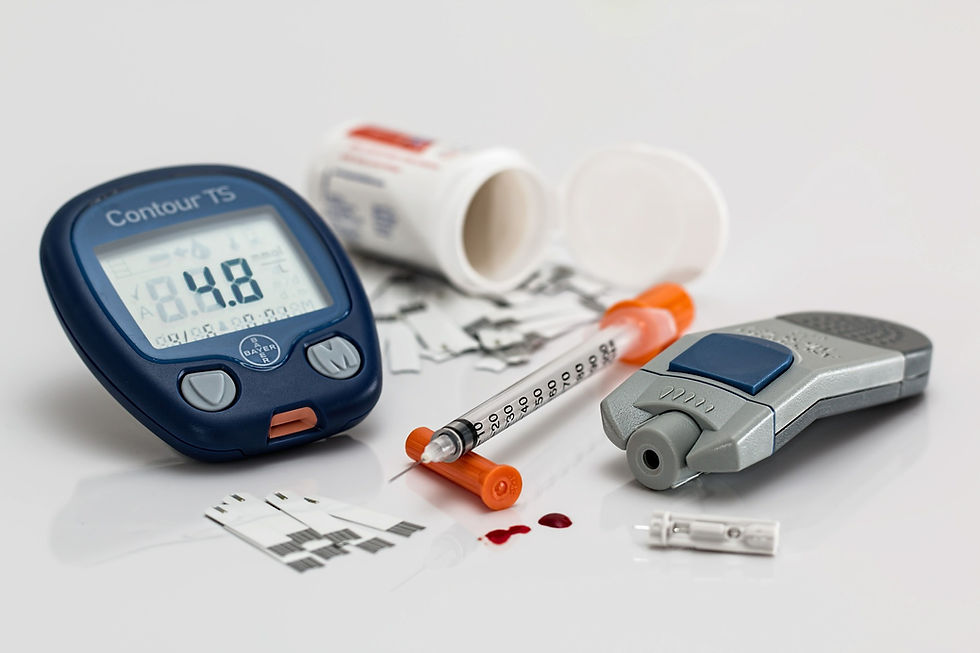A person is diabetic when their blood sugar (glucose) level is 126 mg/dL or more after fasting overnight.
There are three types of Diabetes: Type 1, Type 2 and Gestational Diabetes
Type 1 Diabetes is when the body does not produce insulin and the person needs to inject insulin to control blood sugar levels.
Type 2 Diabetes is when the body does not produce enough insulin or does not process insulin properly.
Gestational Diabetes occurs when hormone changes during pregnancy interfere with the body 's ability to use insulin properly. Blood sugar levels usually become normal about 6 weeks after childbirth.
Symptoms
Symptoms of Type 1 Diabetes come on suddenly. As person may experience increased thirst, increased hunger, dry mouth, frequent urination, unexplained weight loss, fatigue and blurred vision.
Type 2 Diabetes symptoms are similar to type 1 but are more gradual. They may include slow healing cuts and wounds, yeast infections, weight gain, numbness or tingling in hands and feet and erectile dysfunction.
Gestational diabetes symptoms include increased thirst, increased hunger and increased urination. It is important to get tested because the symptoms are similar to pregnancy and diabetes may go undetected and Diabetes can create problems for mother and child.
How to Manage Diabetes
Take medication as prescribed by your doctor
Maintain good cholesterol level
Avoid added sugars and processed starches
Maintain good blood pressure
Follow a balanced meal plan
Exercise regularly, 30 minutes 5 days a week, walking, dancing, swimming, cycling, running etc.
Monitor your blood sugar level
Get laboratory tests ordered by your doctor
Complications from Diabetes include, Heart and artery problems, Kidney disease, Eye problems that can lead to blindness, Foot sores and gangrene that can lead to amputation.

Comments